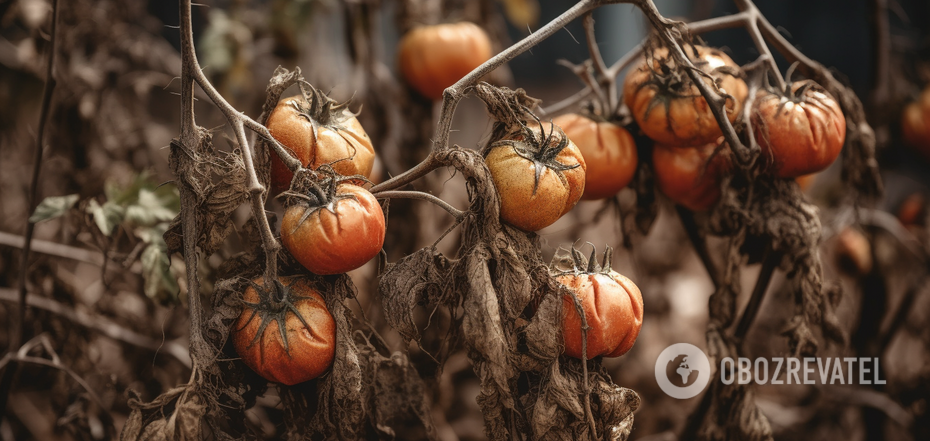Life
No harvest at all: how not to grow tomatoes
Although the tomato is a popular vegetable among vegetable gardeners, its cultivation requires quite a lot of effort. The plant is very sensitive to external conditions and suffers from a considerable number of diseases and pests. Therefore, an inexperienced gardener can ruin the harvest by his unsuccessful actions.
OBOZREVATEL discusses what common mistakes can be made while growing tomatoes and how to avoid them. And also explains what fertilizers are better not to use for this vegetable.
Wrong choice of seeds
Experience often suggests choosing time-tested tomato varieties. But older variants become more vulnerable to disease over time, while newer breeders improve not only in resistance, but also in nutritional properties.
Mistakes in choosing where to grow
Tomatoes need a lot of sunlight, so it is wrong to choose a shaded area of the vegetable garden for them. Plants should be planted away from trees and shrubs, as well as any tall vegetable like corn or sunflowers.
Planting too early
The sunny vegetable is also sensitive to low temperatures. If the plant is kept at 10-15 degrees Celsius for a long enough time, it may lose color or ovary and not yield at all. Therefore, you can plant tomatoes in the open ground only when there is stable heat. This should be checked with the weather forecast for the coming weeks. Make sure that no significant cooling is expected.
Incorrect fertilization
Tomatoes do not like every fertilizer. Certain types of fertilizers and types of their application can be very harmful to plants.
For example, nitrogen fertilizers in excessive amounts can cause chemical burns to tomato bushes. This will stop their growth, damage the leaves and can kill unripe fruits.
In general, excessive fertilizer application is very bad for tomatoes. At best, it will stimulate excessive green mass growth and have a bad effect on wilting and the number and size of fruits. At worst, it will cause irreparable damage to the plants. This applies to both mineral fertilizers and organic fertilizers. Therefore, when applying them, it is better to slightly reduce the recommended dose and in no case exceed it.
Also, a lack of fertilizer can lead to plants not having the strength to form fruit. Experienced gardeners recommend fertilizing tomatoes three times a season. When choosing a fertilizer, it is important that the nitrogen content be lower than the phosphorus and potassium content. An example of a successful combination includes 15 g of ammonium nitrate, 50-60 g of superphosphate and 30-40 g of potassium chloride per 10 liters of water.
Of microfertilizers, tomatoes need boron and magnesium the most. The first substance should be applied under the bushes regularly, magnesium fertilizer - when the plants blossom. Boron will work better by spraying. To prepare it, you need to dilute 1 gram of boric acid in 1 liter of water. Cultivate plants with this solution should be done in the afternoon. Ideally - at sunset, so that the liquid does not evaporate in the sun.
Earlier OBOZREVATEL told you what plants can not be planted next to tomatoes - they will damage the crop.
Subscribe to OBOZREVATEL channels on Telegram and Viber to keep up with the latest news.



























